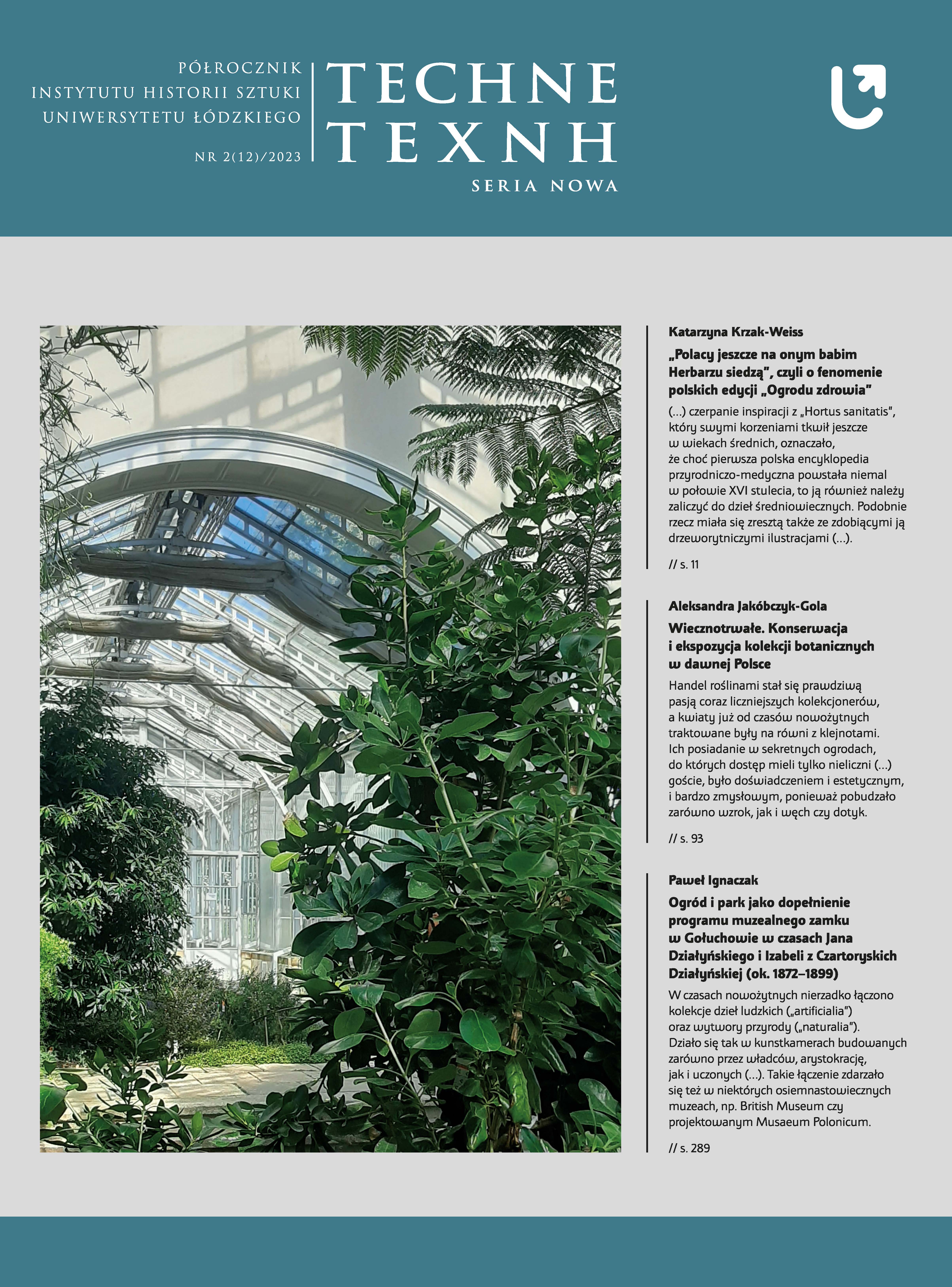Świadectwo krakowskiego ogrodu przełomu XV i XVI wieku
Evidence of a Cracow garden at the turn of the 15th and 16th centuries
Author(s): Julia CzaplaSubject(s): Language studies, Language and Literature Studies, Fine Arts / Performing Arts, History of Art, Sociology of Literature
Published by: Wydawnictwo Uniwersytetu Łódzkiego
Keywords: herbarium; Cracow; incunabula; 15th century; cultivation
Summary/Abstract: One of the effects of the development of medicine and botany at the end of the 15th century was the appearance of various types of gardens where medicinal plants were grown. In addition to monastery gardens, which had been maintained for centuries, new ones were established by both theoreticians and practitioners of herbal medicine – doctors, pharmacists and the first botanists. Among the medical professionals, a new group appeared, professional gardeners who sold plants to pharmacists and probably also provided basic medical advice. In their work, they used scientific (or quasi-scientific) herbaria collecting information about the properties and uses of plants. The collections of the Scientific Library of the Polish Academy of Sciences and the Polish Academy of Sciences in Krakow include an incunabulum documenting the professional practice of a plant breeder (Inc. 31). The incomplete (120 out of over 360 leaves are missing) copy of Gart der Gesundheit from 1485 belonged to an unidentified, German-speaking gardener from Cracow, who made numerous notes in it between 1493 and 1527. The entire text was indexed by him (he wrote down the most important elements of individual plant descriptions in the margins and developed his own index).The richly illustrated incunabulum was not only a source of knowledge (it recorded the uses of plants, sometimes simple recipes and various medical and culinary observations, and also included comments he heard from Cracow doctors), but also a trader’s notebook (most plants have the purchase prices paid in several pharmacies in the Cracow agglomeration, also the selling prices and the source from which he obtained the seeds or a rare plant) and the breeder (most of the notes concern the germination and flowering time of the plants and their appearance, especially elements not shown in the woodcuts or not accurately presented).The illustrations were as important to him as the text of the herbarium. The new woodcuts, developed in Mainz at the end of the 15th century, were relatively realistic and allowed to quickly find the right keyword and identify the plant. The owner from Cracow additionally added their German, Latin and Polish names to the representations of the plants (sometimes different than in the German print). Moreover, he most likely bought his copy already colored, because the notes also include his comments on the quality of the illustrations and possible differences between the real plant and its representation, especially the color of the leaves and flowers.Even though the Cracow copy of Gart der Gesundheit was destroyed in the 19th century attempt at conservation (currently it is missing ⅓ of the pages and the original binding), which makes it impossible to identify its first owner, the notes included in it allow to see how richly illustrated were the scientific publications in the field of botany and herbal medicine used at the turn of the 15th and 16th centuries. Although the book was not cheap, for the owner it was primarily of practical importance and was treated as a kind of almanac that gives insight into the environment of plant breeders of that period, but also into the nature and climate of Cracow at the turn of the Middle Ages and the early modern period.
Journal: TECHNE. Seria Nowa
- Issue Year: 2/2023
- Issue No: 12
- Page Range: 33-50
- Page Count: 18
- Language: Polish

